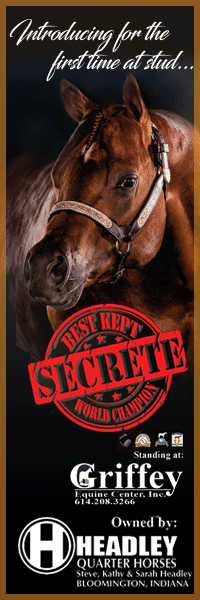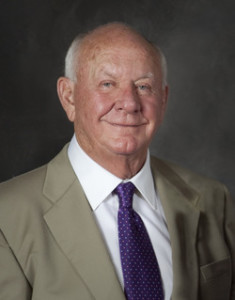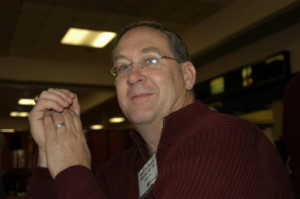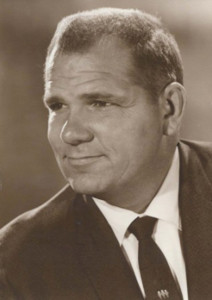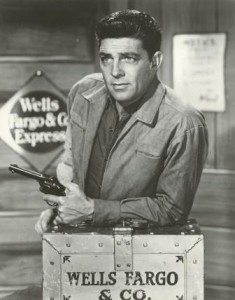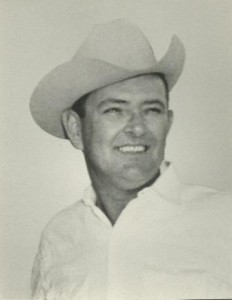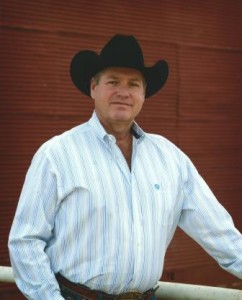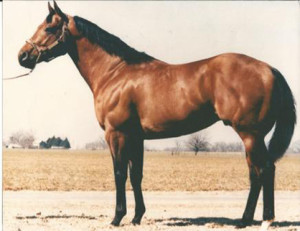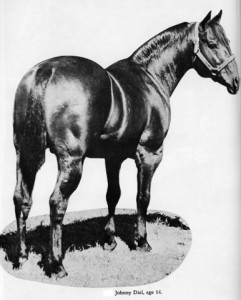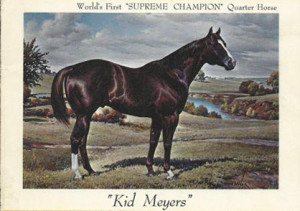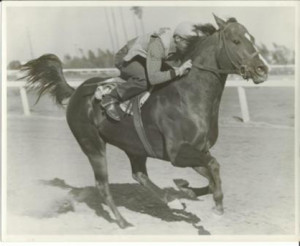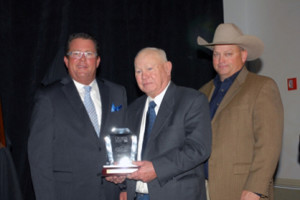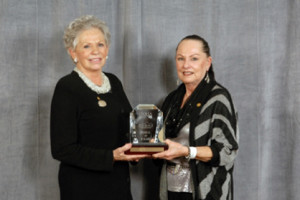Oklahoma Quarter Horse Association Inducts 12 Legends Into Hall of Fame
Bethany, OK – The Oklahoma Quarter Horse Hall of Fame was created in 2005 to recognize outstanding individuals and/or horses whose contributions involving the American Quarter Horse significantly impacted the great state of Oklahoma’s equine industry. Ranchers, racing enthusiasts, and show competitors gathered January 9-10 in Tulsa, Oklahoma, for the Oklahoma Quarter Horse Association Convention.
The 2015 Oklahoma Quarter Horse Hall of Fame Inductees are:
Individuals
Terry Bell
Terry K Bell was a prominent Lawton businessman who made his fame in the moving business, but his first love was breeding and racing outstanding American Quarter Horses in Oklahoma. Terry Bell, Homer “Bud” Hill, and Jim Pitts established a long time partnership. The “You and Me Partners,” as the group was known, made many appearances in the winner’s circle with their race horses.
Eyesa Special, the 2000 champion 2-year-old Quarter Horse, career was punctuated by record-setting Grade 1 victories. In the All American, Eyesa Special won by two lengths in 21.097 seconds for the 440 yards, the fastest quarter-mile ever by a 2-year-old. Eyesa Special then won the Grade 1 Texas Classic Futurity in a stakes-record 19.48 seconds for the 400 yards.
Shoot Yeah won the Sun Country Futurity and Kansas Futurity. He ran out more than $300,000. Shoot Yeah set the all-time highest qualifying mark for the All American Futurity, but just minutes before the race had to be scratched because of a leg problem.
Mighty Invictus won the 2005 Dash For Cash Derby at Remington Park and then again in 2011 when Mighty B Valliant took the Remington Park Futurity title. The list of winners goes on and on with winnings in excess of $1.5 million.
Due to his accomplishments in the sport of racing, Terry’s peers recognized and inducted him into the 2012 Oklahoma Horse Racing Hall of Fame.
G. David McCarroll DVM
G. David McCarroll, DVM, DACVIM, attended Texas A & M University and graduated in 1972. Only one year later, in 1973, he received his DVM from Texas A&M College of Veterinary Medicine. In 1975, David moved to Stillwater, OK and taught two years at the OSU college of Veterinarian Medicine. In 1978, he moved to Tennessee and taught for one year. A year later, in 1979, he moved back to OK, and then in 1980 he practiced medicine in Pilot Point, TX for four years. It was in 1993 that he built Interstate Equine Services on I-35 and Ladd Rd. in Goldsby, OK. He was a member of numerous organizations including; AVMA, OVMA, AAEP, VMG, SOC, NSBA, OQHA and AQHA. He had worked hard and was proud to be appointed as “The Official Veterinarian” for the American Quarter Horse Association.
Chet Robertson
Chet Robertson was involved with the Thoroughbred Horse and Quarter Horse industry for many years and was past president of the Oklahoma Quarter Horse Association and Oklahoma Horsemen’s Association. A native Oklahoman, Robertson had lived most of his life in Oklahoma City. Active in ranching, he operated the Haymaker Farms Ranch since 1963.
The Haymaker Farm was established initially breeding and racing only Quarter Horses, but within a few years Thoroughbreds were added to the program. The Robertsons had an uncanny talent in choosing top quality broodmares, which led to many champions, stakes winners, and winners at the track. Haymaker Farms owned and bred over 120 Register of Merits, 20 stakes winners and five champions with earnings in the millions. The success of their breeding farm led to Chet wanting to reduce his stock in 1963. This is when he realized there was not a good sale around, Chet and Dale simply started their own.
The rest is history, with Haymaker Sales Company quickly growing and gaining in reputation as the sales company in the United States for Quarter Horses of all ages. People from all over the world would attend the Haymaker Sales to obtain the best Quarter Horses available. Chet’s knowledge of horses, bloodlines, and his honest and sincere business sense led the way for the once a year Haymaker Sale growing to several sales a year with the top Quarter Horses. Many sales records for top selling individuals were added each and every year. Soon, a Thoroughbred yearling sale was added in Raton, New Mexico to service the many breeders needing a place in the southwest to market their yearlings.
Bob Moore, along with several partners, purchased Haymaker Sales from Chet and Dale Robertson in 1978. They turned it into Heritage Place Sales Company in Oklahoma City.
Dale Robertson
Dale Robertson parlayed his Oklahoma drawl and a way with horses into a long career as a popular, strong-minded star of westerns on television and in the movies.
In 1947, He purchased 436.8 acres in Oklahoma’s rolling Canadian River Basin and began building his dream, The Haymaker Farm. He had been in the horse business practically all of his life, but with Thoroughbreds. He wanted to enter the horse racing business in a big way, but the question was whether he should stay exclusively with Thoroughbreds or also breed Quarter Horses.
The Haymaker legacy began in the late 1940s. Along the way, they bred world champions, stakes winners, record setters, and outstanding breeding stock. For 17 years the Haymaker Farm was absent from the horse racing business and just bred their stock for the marketplace which was the Haymaker Sale. After the death of Dale’s brother Chet Robertson, the Haymaker Sale was sold and became known as the Heritage Place.
In his later years, Robertson and his wife, the former Susan Robbins, whom he married in 1980, and lived on his ranch in Yukon, Oklahoma.
Rowland Stanfield
Rowland D Stanfield Sr, a third generation Oklahoman, was in the Quarter Horse business is a big way only from 1958 through September 11, 1962 and he left quite an impact on the industry. Part of his theory was that a good horse is a good horse regardless of breeding. Well-known names owned by Stanfield in the halter class were Poco Chata by Poco Bueno, Ace’s Loeleta by Moore’s Ace; Tamet, winner of 44 Grand Championships, Strummer by Pretty Buck and never defeated Grand Champion Hot Shot B.
The racehorse world should remember such names as Clabber Bar, son of Three Bars; Johnny Bull; Piggin String; Johnny Dial, the 1952 World Champion; Tonto Bars Hank, 1960 and 1961 champion colt; Paula Thomasina; Paula Laico; Myrna Three; Leo’s Queen Bee; Maggie Dial; Goldseeker; Sweetie Bar; Depth Charge; Sixteen Tons; Miss Wonder Bars; Sugaree Bars; and others of equal importance. Winnings from horses owned or leased at one time by Stanfield garnered every conceivable honor in the Quarter Horse Racing world.
Through 1971, the produce of the Stanfield’s mares earned approximately $1,400,000 on Quarter tracks; 15 are AAAT; 53 AAA; 58 AA; 24 arena ROM; 11 AQHA Champions, 1 World Champion Running Horse; 2 Champion Two-Year-Old fillies, 1 Champion Three-Year-Old Filly; The World’s Richest Quarter Horse; and numerous track record holders at various times.
The 101 head of Quarter Horses at the Stanfield Stallion Station horse sale on November 19, 1959 averaged $4,000 per head. Fifteen daughters of Three Bars were in the offering. The total take of $406,010 was a record high, in total dollars for a public Quarter Horse auction. Also included in the sale was Sugaree Bars by Sugar Bars, which later proved to be the first AAA-AQHA Champion of the breed.
Stanfield’s second and final dispersal sale, on September 11, 1962 was another record breaker. A $647,000 gross, a $10,110 average and $86,000 paid for Clabber Bar, were the magic numbers. Lady Bird Leo and Leo’s Queen Bee, both by Leo and out of Yeager’s Lady JA, tied for the top-selling mare honors at $26,500.
Rowland was also an active proponent of urging the Oklahoma State Legislature to approve a pari-mutuel horse racing bill. In December of 1960, he and other members of the Sooner State Thoroughbred Breeders Association, including Dale and Chet Robertson, designed a plan to gain state-wide support for pari-mutuel betting. They also ratified a proposed bill laying out a pari-mutuel betting plan that was submitted to the legislature.
Jeff Terpstra
Jeff Terpstra was born and raised in central Iowa. His dad was a professional horse trainer, so Jeff was involved and around the horse industry at a very early age. He grew up riding all around horses. He showed them at halter and then saddled them to do the performance classes. His father also trained rope horses so Jeff has been roping ever since he could swing one. He showed horses all through his youth. Jeff’s father, mother and sister also exhibited horses.
Jeff lost his dad when he was 14 in a horse related accident, but he left the family with the love of horses that lasts to this day. At 19, Jeff moved to Oklahoma with Lynda, who has been his wife for 31 years, and they started a life in Oklahoma. He worked as an ironworker for five years when a crane operator hit the structure he was on, knocking him off, breaking both heels and his back in three places.
Two years later, in 1988, he started training horses for a living. In 1989, their daughter Lacey was born, which launched another horse show family program. In 1991, the Terpstra family bought a place near Guthrie where they still live today. Jeff began training riding horses for a living. He rode anything from mules to the broncs that no one else wanted to ride, but there were some real nice ones too. He trained horses that earned points in halter, western pleasure, western riding, reining, cow horse, trail, speed events, roping and even English. In the late 1990s, Jeff became a director for Oklahoma Quarter Horse Association. In 2002, Jeff served as OQHA president and has been an AQHA Elected National Director for Oklahoma since 2000.
Horses
Bully Bullion
Bully Bullion (1984 bay stallion by Special Effort-Mary Poppins by Bond Issue) was one of the first champions sired by world champion and Ruidoso triple crown winner Special Effort. Bred-and-owned by Jean Chavers of Lupton, Colorado, Bully Bullion was out of the Bond Issue mare Mary Poppins. For 26 years, he stood as a stallion at Belle Mere Farms, which was owned by Betty and Dee Raper near Norman, Oklahoma.
Foaled in 1984, the bay stallion won or placed in 22 of 28 career starts while earning $225,384. Named the champion aged stallion in 1988, he won the All American Gold Cup (G1), Oklahoma Derby-Fall Division (G3), Mr Jet Moore Stakes and Ruidoso Handicap. He was second in the Ventura Handicap and third in the World’s Championship Classic (G1), New Mexico State Fair Handicap (G2) and San Clemente Handicap. Bully Bullion was also a finalist in the Rainbow Silver Cup (G1), QHBC Sophomore Classic (RG2) and Oklahoma Futurity-Fall Div. (G3).
From 23 crops of racing age, Bully Bullion sired 429 winners, 40 stakes winners, 55 stakes-placed and earners of $8.9 million.
Johnny Dial
Johnny Dial (1948 brown stallion by Depth Charge (TB)-Black Annie by Rodney) racked up the fastest time recorded by any stallion running during the first eleven years of organized Quarter Racing. He had a heart that was bigger than all outdoors. Few jockeys could ride him. Disposition had nothing to do with it; he got away from the starting gates so quick and with such a bone jarring leap they simply could not stay with him.
Over the years he was campaigned on the straightaways 1950 thru 1953. Johnny Dial smashed the records of such outstanding sprinters as Black Easter Bunny, Tonto Bars Gill, the celebrated Barbara L, not to mention such hard knockers as Clabbertown G, Tonta Lad, Mona Leta, and Billy Van Dorn.
Johnny Dial was bred by Charles E Hepler, of Pinon, New Mexico and was owned by Earl Shapiro Festus MO. He was sired by the great Depth Charge out of legendary mare Black Annie by Rodney, a son of Old D J. Through 1961, Johnny Dial had 29 starters; 17 were winners, 19 were Register of merit qualifiers, and 10 with an AAA speed index.
Kid Meyers
Kid Meyers (1963 sorrel stallion by Three Bars (TB)-Miss Meyers by Leo) was a steady racer with earnings of more than $10,000. When he returned home from the track, A.B. asked trainer Jerry Wells to assess Kid Meyers as a halter prospect, and they decided to point the colt toward AQHA’s new Supreme Champion award and earned the title.
In the breeding barn, Kid Meyers sired Mr Kid Charge, the winner of the 1971 All American Futurity.
Kid Meyers was trained and shown by Jerry Wells for his Supreme title. In this horseman’s capable hands, he accumulated the necessary points by the age of four and made history as the very first horse to win this award.
From his Green Pastures Ranching in Purcell, Oklahoma, oilman A.B. Green raised and raced some of the most famous horses of their day.
Mr Bar None
Oscar “June” Jeffers Jr. had an eye for speed, and his wife, Zelma, had a knack for crossing the right bloodlines. Together, they created an explosive, record-breaking racehorse.
In 1955, June and Zelma saw their breeding vision arrive when a spindly legged colt was foaled. Mr Bar None (1955 sorrel stallion by Three Bars (TB)-Murl L by Moco Burnett) as they called him, was a dark chestnut with a vivid white star and strip down his face that would show through his racing silks as his head burst out in front of many a racing finish line.
He was a champion – 2 year old colt in 1958, 3-year old champion, champion stallion and world champion quarter-running horse. Total earnings for two years was $72,117.00 He holds the track record at Ruidoso Downs – 350 yards, 17.6 seconds and co-holds five other records.
The late Kenneth Chapman was Bar None’s jockey for every race but one, and Bar None finished the 1958 race season as the AQHA racing champion stallion, the AQHA racing champion 3-year-old colt, and the world champion racing Quarter Horse.
After Mr Bar None left the track, it was other horse owners loading up their mares and driving to Wagoner OK to the court of Mr Bar None. Mr Bar None’s foals earned $1.157 million on the track.
Drummond Ranch
The Drummond Ranch of Pawhuska, Oklahoma was founded in 1910 by RC Drummond, who was later joined by his brothers and sons in expanding the ranch. By 1920, RC had increased his cattle, bison, and horse operations. Horses were utilized in both ranching and farming, as well as travel. By 1930, RC had around 100 brood mares of all different types.
In the early 1940’s, one of RC’s sons, Fred A, purchased 20 daughters of a quality horse known as Leo, thereby establishing Drummond Ranch’s registered Quarter Horse operation.
In the early 1940’s, Fred A. married schoolteacher Ruth Thatcher and had three children together – one of whom is Chuck Drummond. Chuck was interested in horses at a very young age, riding almost before he was able to walk.
In 1983, Chuck had open heart surgery and was encouraged by his cardiologist to find a hobby. Later that year, he began acquiring what he believed would be a quality set of broodmares and went on to win numerous titles with mares such as Foxie Merada, Playbos Samatha and several others. Then, he found himself in need of a better stallion to breed these outstanding mares, so he purchased Doc Stylish Oak in 1988. Stylish proved to be a major cross on Chuck’s broodmares, producing offspring such as Mr Mom, Playin Stylish, Pepto Stylish Oak, Stylish and Foxie and others.
Doc Stylish Oak proved to be one of the leading sires of the National Cutting Horse Association and the American Quarter Horse Association. Daughters of Stylish have proven that they are producers as well.
In 1993, Chuck sold Stylish and once again he needed cross on the Docs Stylish Oak mares. Drummond purchased Lizzielena who was in foal to Freckles Playboy; they produced a colt named Lizzy Gotta Player. The colt proceeded to win numerous titles and was the world champion in 2004. Every horse produced on this ranch plays a strong role in the programs of breeding, competition and ranch work.
In 1995, Tim, Chuck and Nan’s middle son, took over the cutting horse operation. As of 2014 at the Mecuria Finals, four of Drummond Ranch’s horses were in the finals.
As of today, the Drummond Ranch family is home to fourth generation of AQHA breeders and is continuing its appreciation of the American Quarter Horse with the fifth generation.
Bud Breeding Oklahoma Spirit Award: Betty Wells
Petite brunette Betty Jeanne Cope Wells is always actively promoting the industry, which involves her three passions: horses, youth and volunteering.
Betty Wells, Norman OK is the widow of the legendary Jerry Wells. She married Jerry, her high school sweetheart, at the age of 18. This began 43 years of a special marriage and a business built from very little. The American Quarter Horse was the foundation of their life-long journey, side by side, as they rose to the top of the Quarter Horse world, with halter, roping and race horses, and her own barrel racing horses.
She went on to win 9 World Championships: 8 in Amateur Halter and one in Open Halter at the first AQHA World Show in Louisville, Kentucky in 1974. That horse was Two Eyed Dandy. Betty owned two Junior World Champion Barrel Horses: Cool Approach in 1987 and Miss Mergie in 1996, which she owned with AQHA Past President Frank Howell. She also had a halter APHA World Championship in 1997 with Perpetualized. Jerry and Betty stood many stallions over the years and had numerous horse shows and sales.
Shortly after Jerry’s death in 2008, Betty and her children, Nancy Wells Berry and Marty Wells, started a memorial scholarship fund available to college bound OQHA youth. In 2009, she started the Jerry Wells Memorial Scholarship Halter Futurity for yearlings. Each futurity entry has 10% deducted for the Scholarship Fund. The 6th annual futurity is a special WCHA event during the OQHA Redbud Horse Shows.
For more information about nominating to the Oklahoma Quarter Horse Hall of Fame refer to the Oklahoma Quarter Horse Association website okqha.org.





